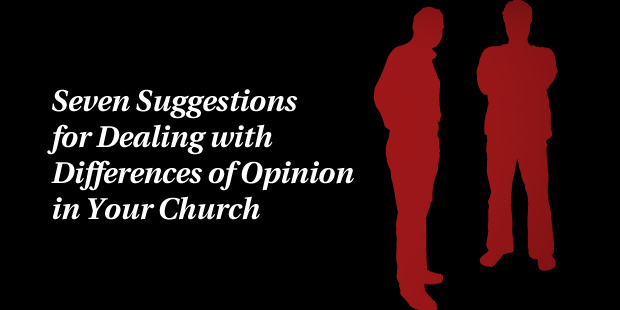
Learn to Navigate Conflict from this Biblical Character
In Nehemiah 5, the Israelites faced conflict for one of the same reasons we do today: selfishness. So, what can we learn from Nehemiah about handling conflict?
1. Take the problem seriously. (v. 6)
Nehemiah didn’t ignore the problem; he took it seriously. When the unity of your church gets challenged, it’s your job to protect that unity. It’s serious business.
In times like this, a certain level of anger is completely appropriate and right. Leadership means knowing the difference between the right kind of anger and the wrong kind of anger.
2. Think before you speak. (v. 7)
If you only do step one and ignore step two, you’ll get in lots of trouble. Nehemiah 5:7 says, “I pondered them in my mind” (NIV). Nehemiah stopped, got alone with God, and thought about what he was going to do. He asked God, “What do you want me to do?”
You should get angry when disunity threatens your church, but you have to think before you act. You can’t just act on that anger. James 1:19-20 says, “Everyone should be quick to listen, slow to speak and slow to become angry, because human anger does not produce the righteousness that God desires” (NIV).
I’ve seen a lot of leaders who were highly effective for the Lord blow their ministry in an impulsive moment. Don’t let that happen to you. Get angry, but then take some time to think and pray about what to do next.
3. Rebuke the person individually. (v. 7)
Go directly to the source. You don’t deal with somebody else about it. You don’t talk with five or six different people to get everybody on your side. You don’t say, “I’ve got a prayer request . . .” and then spout it out.
Instead, you go directly to the person causing the disunity. Nehemiah did that: “I pondered them in my mind and then accused the nobles and officials. I told them ‘You are exacting usury from your own countrymen!’” (Nehemiah 5:7 NIV).
Nehemiah wasn’t making a polite social visit. He was angry, and he didn’t gloss over the fact that these guys were ripping off other people. He wasn’t watering it down. He was confronting the troublemakers. You and I are called to do that, too, when disunity threatens our churches.
Titus 3:10-11 says, “Warn a divisive person once, and then warn him a second time. After that, have nothing to do with him. You may be sure that such a man is warped and sinful; he is self‑condemned”(NIV).
Warning troublemakers is an important task of ministry.
4. Publicly deal with public divisions. (v. 7)
In Nehemiah’s situation, everyone knew that the rich people were ripping off the poor. He had to deal with it publicly. Nehemiah 5:7 says when going privately to the rich officials didn’t work, he called together a large meeting to deal with them. It must have been a tough conversation because it was probably the rich officials paying most of the expenses to rebuild the wall. It took guts to confront them publicly.
You, too, have to deal with problems to the degree that they are known. If the problem has spread to the whole church, then you have to deal with the problem publicly.
5. Set an example of unselfishness. (v. 10)
Nehemiah led the way in unselfishness. It was the foundation of his leadership. When he asked them to rebuild the wall, he was out on the wall rebuilding it. When he asked them to pray, he had already been praying. When he asked them to work night and day to get it built, he did the same. When he asked them to help the poor, we find out in verse 10 he’d already been doing it.
Nehemiah never asked anyone to do what he wasn’t already doing or wasn’t willing to do. Leaders only ask others to do what they are already doing or are willing to do. If you cannot challenge someone to follow your example, whatever you say to them is going to lose its impact. Churches have fewer conflicts when their leaders live unselfishly and model that to the congregation.
You’re going to have disagreements in your church. There’s no perfect church. But God wants us to minimize disunity in our churches for his glory. The testimony of a church should not be the beautiful buildings, great sermons, or lovely music, but how the people love one another.

Tags: Conflict, Handling Conflict, Nehemiah, Rick Warren





















